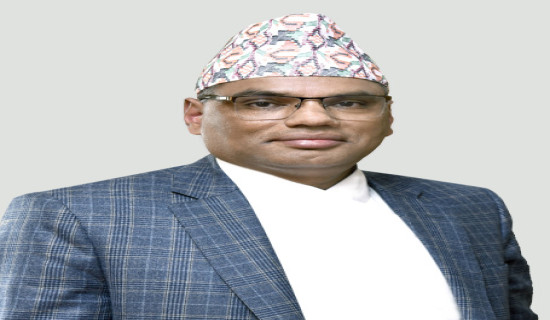- Saturday, 7 June 2025
Merger For Stability
With the introduction of Nepal Rastra Bank’s acquisition and merger policy, banks and financial institutions (BFIs) have been merging with each other, instilling a new confidence in the financial sector of the country. As the merger consolidates the financial position of banks, they contribute to form capital and spur growth. Banks accumulate savings of public and supply this amount to run business and industries in the form of loans. Investment in the productive sector helps generate jobs for the unemployed and tax for the government. In this economic cycle, the financial sector needs to be strong and stable. If the banks face problem of liquidity and fall short of money to lend to individuals and commercial entities, the national economy will also feel the heat. Increase in the number of BFIs is not bad as long as they sustain well and are able to maintain stability.
Currently, there are 303 banks and financial institutions in the country including 32 commercial banks, 92 development banks, 78 finance companies and 101 microfinance companies. Given the small size of its economy, Nepal needs a minimum of 11 to a maximum of 15 commercial banks, states a study. The central bank has pushed merger and acquisition process to restructure the BFIs to enhance their competitiveness and expand their services efficiently. It also helps reduce the banks’ operation costs and unnecessary competition and reach out to a large number of clients. The merger of strong and weaker banks helps to create robust merged institutions. The NRB introduced a merger bylaw in 2011 and acquisition bylaw (2013), which were integrated in 2016 to facilitate mergers between banks and financial institutions. In its monetary policy of 2015/16, the regulatory agency asked the A, B and C class financial institutions to raise their paid-up capital size by four times.
The commercial banks should have a capital of Rs. 8 billion, development banks Rs. 2.50 billion and financial institutions Rs. 800 million. This condition impelled the BFIs to go for a merger. In 2019, Global IME Bank and Janata Bank merged but there has not been much enthusiasm among the banks to find their partners for the merger. Through its monetary policies, the NRB announced an array of incentives such as relaxation in regulatory ratios, waiver in cooling period for the members of board of directors and senior officers of the BFIs, relaxation in maintaining cash reserve ratio (CRR) and credit to capital and deposit (CCD) ratio and relaxation in sectoral lending targets, among others, according to the news report of this daily. The banks have quickened the merger process to enjoy the facilities that they can enjoy within the given timeframe.
Now, altogether 245 BFIs have been involved in the merger process as of mid-July 2022. Of them, license of 178 BFIs have been revoked, leaving only 67. Within a short period of time, merger deals were signed between Nabil and Nepal Bangladesh Bank whose integrated business has already started. Similarly, Nepal Investment Bank-Mega Bank, Global IME and Bank of Kathmandu and Himalayan Bank and Civil Bank are in the merger process. Once these banks are merged, they are expected to enhance their capacity in terms of investment and risk bearing. This will also earn them greater public trust but the NRB needs to monitor the merged banks to make sure that they maintain healthy competition and enhance their operational efficiency.














-original-thumb.jpg)

